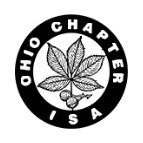Webinars On-Demand
Education and research are vital elements in the fulfillment of the Chapter's mission. Chapter volunteers and staff work continuously with industry professionals and field experts to develop online resources that provide diverse educational opportunities and platforms for the presentation of new research, information, and technology. Visit this site often for added learning resources to help you further your career and meet ISA CEU requirements.
Webinars are available 24/7. Ohio Chapter Members: $20 each / Non-Members: $30 each
Proper Tree Planting Based on Ohio Specifications
Many newly planted trees struggle to survive—often failing within just a few months or years after installation. These failures are frequently preventable and tied to improper planting practices. You can improve long-term tree health and reduce losses by specifying and following the Ohio Sample Tree Planting Specifications. This proven resource outlines best practices for successful tree establishment—from site preparation to proper planting depth and post-planting care. Learn how to achieve better outcomes and protect your investment in community trees. Mark A. Webber, BCMA, presented this Tree Talk Tuesday webinar.
ISA CEUs: 1.0 Certified Arborist, Utility Specialist, Municipal Specialist, Aerial Lift Specialist, Climber Specialist, BCMA Practice
Are your Trees Experienced, or are they Susceptible?
This webinar focuses on how natural selection is an important consideration in arborists’ tree selection, particularly in terms of its susceptibility to pests, pathogens, and environmental factors. We will provide case studies in a back-and-forth, contrapuntal (counterpoint) style. (2024)
ISA CEUs: 1.0 Certified Arborist, Municipal Specialist, BCMA Science
Identification & Management of Oak Wilt in Ohio
Although oak wilt has been known to occur in Ohio since at least 1950, it seems to be increasingly damaging across the state. This presentation covers the basic biology and identification of oak wilt, as well as the collection of samples for laboratory confirmation of oak wilt and provides management options for both natural forests and urban settings. (2024)
ISA CEUs: 1.0 Certified Arborist, Utility Specialist, Municipal Specialist, Aerial Lift Specialist, Climber Specialist, BCMA Science
The ANSI A300 Standards document what industry stakeholders can agree upon within the context of the ANSI approval process. When wielded correctly, they can form powerful legal weaponry for both defensive and offensive use.
Learn how to limit your liability when performing risk assessments by following the mandatory requirements. Learn how to avoid offensive strategies by plaintiffs that attack insufficiency of inspections, reports, and pruning practices.
ISA CEUs: 1.0 Certified Arborist, Climber Specialist, Utility Specialist, Municipal Specialist, Aerial Lift Specialist; .5 BCMA Practice, BCMA Management
2021 Virtual Ohio Tree Care Conference Webinars
Please select the webinar of your choice and complete the registration information. Upon receipt of payment, a link to the recording and quiz will be emailed to you.
*CEUs can be earned once for each webinar. Each one-hour session requires a passing grade (≥80%) on a 20-question quiz. Members MUST log in to get member pricing.
| 2021 Virtual Ohio Tree Care Conference Keynote Presentation |
Speaker: Dr. Georffrey Donovan, USDA
ISA Credits: 1.25 Certified Arborist, Municipal Specialist, BCMA Science |
| ALB Update |
Speaker: Joe Boggs, The Ohio State University
ISA Credits: 1.0 Certified Arborist, Utility Specialist, Municipal Specialist, BCMA Science, TW Climber Specialist, TW Aerial Lift Specialist |
| Attracting and Retaining Utility Arborists |
Panel: Kris Keefer, Asplundh; Michael Mongell, PennLine; Doug Shaffer, Townsend Tree
ISA Credits: 1.0 ertified Arborist, Utility Specialist, Municipal Specialist, BCMA Management |
| Beech Leaf Disease |
ISA Credits: 1.0 Certified Arborist, Utility Specialist, Municipal Specialist, BCMA Science, TW Climber Specialist, TW Aerial Lift Specialist |
| Closed Chain of Custody, Herbicide Trends |
Speaker: Steve Gray, Nutrien
ISA Credits: 1.0 Certified Arborist, Utility Specialist, Municipal Specialist, BCMA Management |
| Developing Leaders in Your Culture of Safety |
Speaker: Keith Pancake, ACRT Services
ISA Credits: 1.0 Certified Arborist, Utility Specialist, Municipal Specialist, BCMA Management, TW Climber Specialist, TW Aerial Lift Specialist |
| The Ecology of Roadside Trees and Asphalt Pavement |
Speaker: Glen Matlack, Ohio University
ISA Credits: 1.0 Certified Arborist, Municipal Specialist, BCMA Management |
| Effects of Insecticides on Natural Enemies |
Speaker: Rachel Bienemann, The Ohio State University
ISA Credits: 1.0 Certified Arborist, Municipal Specialist, BCMA Practice |
| Electrical Hazards Demonstration |
Speaker: Jerome Monaco
ISA Credits: 1.0 Certified Arborist, Utility Specialist, Municipal Specialist, BCMA Management, TW Climber Specialist, TW Aerial Lift Specialist |
| Environmental Justice in the Urban Forest: Deepening the Connection |
Speaker: Christine Carmichael, Fair Forests Consulting
ISA Credits: 1.0 Certified Arborist, Municipal Specialist, BCMA Management |
| Equity - Another Piece in the Tree Canopy Puzzle |
Speaker: Kerry Gray, Davey Resource Group
ISA Credits: 1.0 Certified Arborist, Municipal Specialist, BCMA Management |
|
A Focus on Arborist Rescue
|
Speaker: Rich Hattier, Option Access
ISA Credits: 2.0 Certified Arborist, Utility Specialist, Municipal Specialist, BCMA Management, TW Climber Specialist, TW Aerial Lift Specialist |
| The Impact of Urban Tree Planting Gentrification |
Speaker: Dr. Geoffrey Donovan, USDA
ISA Credits: 1.0 Certified Arborist, Municipal Specialist, BCMA Management |
| Invasive Species |
Speaker: Ellen Crocker, Ph.D.
ISA Credits: 1.0 Certified Arborist, Utility Specialist, Municipal Specialist, BCMA Science, TW Climber Specialist, TW Aerial Lift Specialist |
| Investing in Trees for Health, Safety, and Equity: Creating Columbus' First Urban Forestry Master Plan |
Speaker: Rosalie Hendon, City of Columbus Recreation & Parks
ISA Credits: 1.0 Certified Arborist, Municipal Specialist, BCMA Management |
| IVM Best Management Practices |
Speaker: Geoff Kempter, Asplundh
ISA Credits: 1.0 Certified Arborist, Utility Specialist, Municipal Specialist, BCMA Practice |
| Make Every Anchor Matter and Equipment Inspection & Integration |
Speaker: Tony Tresselt, North American Training Solutions
ISA Credits: 2.0 Certified Arborist, Utility Specialist, Municipal Specialist, BCMA Practice, TW Climber Specialist, TW Aerial Lift Specialist |
| Monarch and Pollinator Health in ROW Corridors; The Value of Edge Trees in Habitat Enrichment |
Speaker: Anand Persad, ACRT
ISA Credits: 1.0 Certified Arborist, Utility Specialist, Municipal Specialist, BCMA Management |
| The Next Vital Sign - Trees and Human Health |
Speaker: Josh Behounek, Davey Tree
ISA Credits: 1.0 Certified Arborist, Utility Specialist, Municipal Specialist, BCMA Management, TW Climber Specialist, TW Aerial Lift Specialist |





